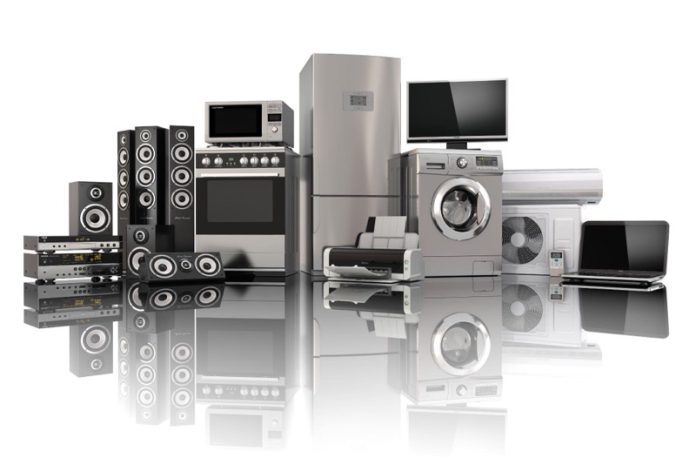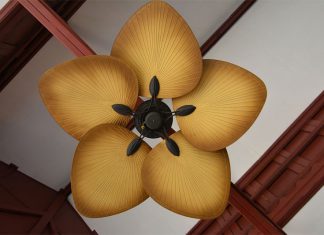If you’re tired of sky-high energy bills each month, you’re not alone. Many homeowners grapple with the same issue, often wondering what they can do to cut costs. The good news is, energy efficiency in Australian homes can be significantly improved through your household appliances. By making smarter decisions about how you use your appliances, you can reduce your energy consumption and, consequently, your bills.
This article is your guide to doing just that and more. We’ll delve into understanding energy consumption and offer tips on energy-efficient lighting. We’ll show you how to maximize efficiency in your kitchen appliances and help you choose energy-efficient electronics. And we’ll explore the use of smart home technology for energy savings.
It’s all about making little changes that add up to big savings. So, get ready to take control of your energy usage and keep more money in your pocket.
Understanding Energy Consumption
You’ve got to understand your energy consumption habits are the secret key to significantly lowering your monthly bills. It’s all about getting to grips with how much power your appliances draw and the often-overlooked details of their operation.
Take your fridge, for instance. It’s constantly running, so it’s always consuming energy. Yet, if you adjust its temperature to be slightly warmer, you can reduce its power usage without spoiling your food.
Similarly, your computer, when left on standby instead of being completely turned off, could be sipping more energy than you realize.
It’s these nuances of energy consumption that, when understood and modified, can lead to a significant decrease in your energy bills. Your appliances are tools — learning to use them efficiently is the trick.
Tips for Energy-Efficient Lighting
Switching to LED bulbs in your home can drastically cut down on power consumption, saving you a pretty penny in the long run. These bulbs use about 75% less energy than traditional incandescent bulbs and last up to 25 times longer. Imagine the savings when you’re not constantly buying replacements!
Proper lighting design can also make a difference. Opt for task lighting over general lighting to focus light where you need it most. Dimmer switches let you adjust light levels to your liking, further reducing energy use.
Remember, even the smallest steps can have a big impact. By making these changes, you’re not just cutting down your energy bills but also contributing to a more sustainable future. Now, isn’t that a bright idea?
Maximizing Efficiency in Kitchen Appliances
Just think about how much dough you could save by optimizing the way you cook, clean, and cool in the kitchen! Start with your fridge, the most energy-hungry appliance. Ensure it’s running efficiently by setting the temperature between 35-38°F for the main compartments and 0°F for the freezer. Avoid overloading it; air needs to circulate for optimal cooling.
Next, your dishwasher. Only run full loads and skip the heated dry cycle. Air drying saves energy.
In terms of cooking, consider using a microwave, toaster oven, or slow cooker instead of the oven. They use less energy and don’t heat up your kitchen.
Finally, remember to unplug small appliances when not in use. Even in standby mode, they’re still consuming power.
Implement these changes and watch your energy bills shrink.
Choosing Energy-Efficient Electronics
Now, let’s tackle the subject of choosing electronics that are friendlier to both your wallet and the planet. Start by looking for Energy Star labels. These aren’t just fancy stickers; they’re assurances that the product meets strict Australian energy efficiency guidelines.
Next, consider the device’s energy consumption in standby mode. Did you know some electronics use nearly as much power when they’re off as when they’re on? It’s an energy drain you can avoid by choosing devices with low standby power usage.
Don’t overlook the importance of maintenance, either. Regularly updating software, for instance, can keep your gadgets running at peak efficiency. Lastly, remember that sometimes, the most energy-efficient option is not upgrading at all.
Utilising Smart Home Technology for Energy Savings
Imagine controlling the temperature, lights, and even the power consumption in your house with just a few taps on your smartphone! Welcome to the world of smart home technology, where convenience meets energy efficiency.
You can install smart thermostats that learn your schedule and preferences, automatically adjusting temperatures to save energy. Smart switches and plugs allow you to remotely control lighting and appliances, avoiding wasted energy from lights left on or devices in standby mode.
Energy monitoring systems provide detailed insights into your home’s energy use, helping you identify wasteful habits. Additionally, you can integrate solar panels and battery storage with smart home systems for optimal energy usage.
By harnessing this technology, you’re not only making your life easier but also reducing your energy bills.
Infographic Provided By solar panel installation Arlington Company, Sunburst Solar
Conclusion
In conclusion, you’re now equipped with invaluable knowledge to convert your home into an energy-saving haven. You’ve grasped the importance of implementing efficient lighting, optimizing kitchen appliances, choosing energy-efficient electronics, and harnessing the power of smart home technology. These strategies, from smart thermostats to energy monitoring systems, provide energy savings right at your fingertips while offering modern convenience.
Remember, every small action contributes to the broader picture of energy efficiency. Each LED bulb switched, each optimised appliance use, and each smart tech adjustment contribute to impressive reductions in energy consumption and cost savings over time. So, embark on this journey today, as these minor changes can lead to substantial savings and a more sustainable lifestyle.
But it’s crucial to understand that this journey of energy efficiency extends beyond merely reducing bills. It’s a collective effort to preserve our environment. By focusing on energy efficiency, you are taking a crucial step towards reducing greenhouse gas emissions and promoting a sustainable future. In essence, energy efficiency in Australian homes is not just an investment that pays off monetarily, but it’s also a significant contribution to a greener and healthier planet for future generations.















